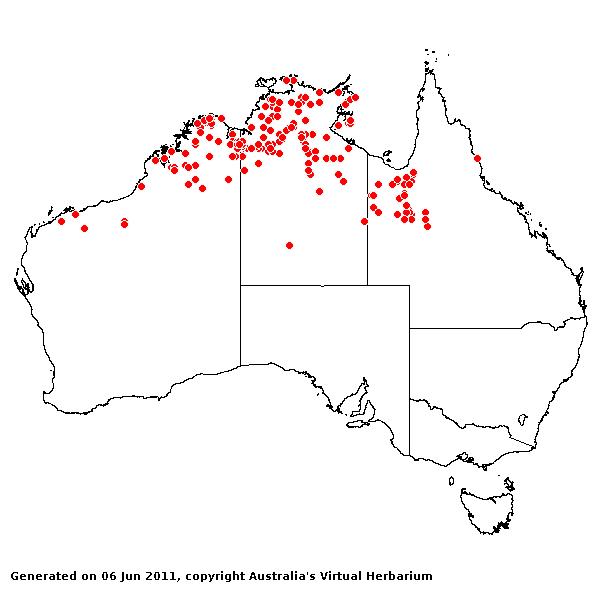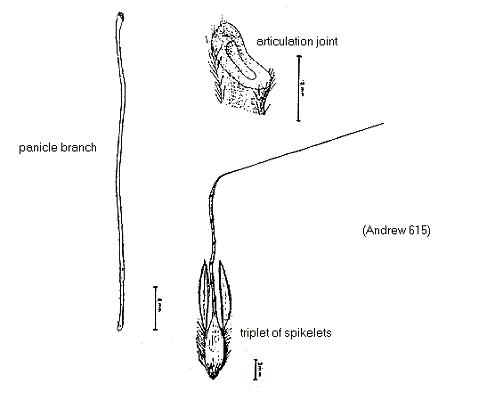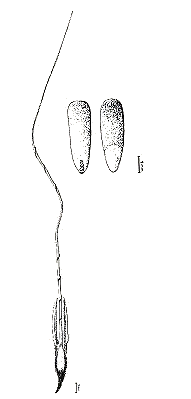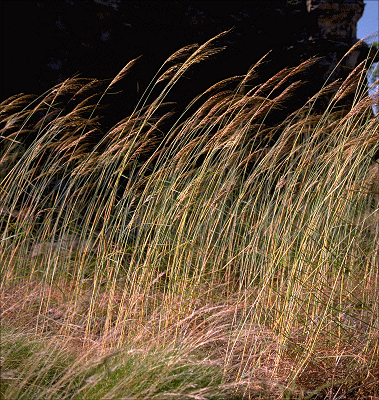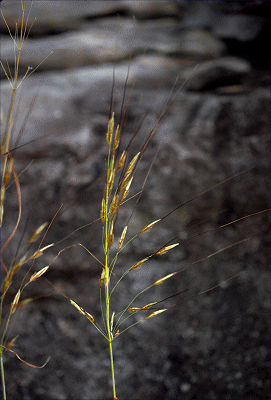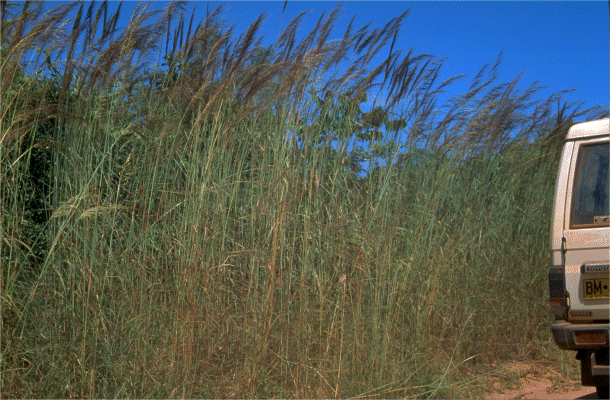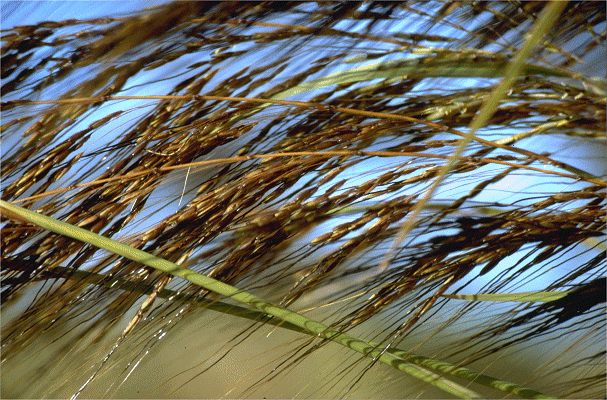Sarga timorense (Kunth) Spangler. Austral.
Syst. Bot. 16(3): 292 . (2003).
Classification. (GPWG 2001) : Subfamily
Panicoideae. Andropogoneae.
Basionym and/or
Replacement Name: Andropogon
tropicus var. timorensis Kunth, Revis. Gramin. 1: 367, t. 97
(1829).
Type of Basionym or
Protologue Information: var "B" in insula Timor.,.
Recent synonyms:
Sorghum amplum, S. brachypodum, S. bulbosum, S. ecarinatum, S. matarankense,
S. stipoideum, S. timorensis.
Key references
(books and floras): [1952] C.A.Gardner, Flora of Western Australia 1
Gramineae (318 as Sorghum stipoideum, 319), [2002] D.Sharp &
B.K.Simon, AusGrass, Grasses of Australia.
Habit. Annual.
Culms erect or geniculately ascending, 30–400 cm tall, 2.6–13 mm diam., 3–9
-noded. Mid-culm internodes pruinose or glabrous. Mid-culm nodes glabrous or
pubescent or bearded. Lateral branches simple or sparsely branched.
Leaf-sheaths glabrous on surface or hairy. Ligule an eciliate membrane or a
fringed membrane, a ciliolate membrane, 1.3–5.8 mm long, abaxially glabrous or
abaxially scaberulous or abaxially hairy. Leaf-blades straight or curled, 30–60
cm long, 5–70 mm wide. Leaf-blade surface glabrous or indumented.
Inflorescence.
Inflorescence compound, a panicle of rames. Panicle dense or loose, 11–40 cm
long, 4–6 cm wide. Rhachis evident or obsolete, tough or fragile at the nodes.
Spikelets.
Spikelets sessile, 1 in the cluster. Companion spikelets pedicelled, 1 in the
cluster or 2 in the cluster. Companion spikelets developed, containing empty
lemmas or male, 4.5–18 mm long. Companion spikelet glumes muticous or mucronate
or awned. Fertile spikelets 2-flowered, the lower floret barren (rarely male),
the upper fertile, comprising 1 basal sterile florets, comprising 1 fertile
floret(s), without rachilla extension, linear or lanceolate or elliptic or
oblong or obovate, dorsally compressed, 6–18 mm long.
Glumes.
Glumes dissimilar, firmer than fertile lemma, dull or shiny. Lower glume ovate,
cartilaginous or coriaceous or indurate, much thinner above, without keels or
keeled, 2-keeled, 7–11 -nerved. Lower glume surface glabrous or indumented.
Lower glume apex muticous or mucronate. Upper glume ovate, cartilaginous or
coriaceous or indurate, without keels, 5–9 -nerved. Upper glume surface
asperulous, glabrous or indumented. Florets. Basal sterile florets 1,
barren, without significant palea. Lemma of lower sterile floret hyaline, 2
-nerved.
Fertile lemma 1
-nerved. Lemma apex dentate or lobed, awned, 1 -awned. Median (principal) awn
from a sinus, 30–155 mm long overall, with a twisted column. Palea absent.
Lodicules present. Anthers 3. Grain 2–6 mm long.
Continental
Distribution: Tropical Asia and Australasia.
Australian
Distribution: Western Australia, Northern Territory, Queensland.
Western Australia:
Gardner. Northern Territory: Darwin & Gulf, Victoria River, Barkly
Tableland, Central Australia North. Queensland: Cook, Burke.

